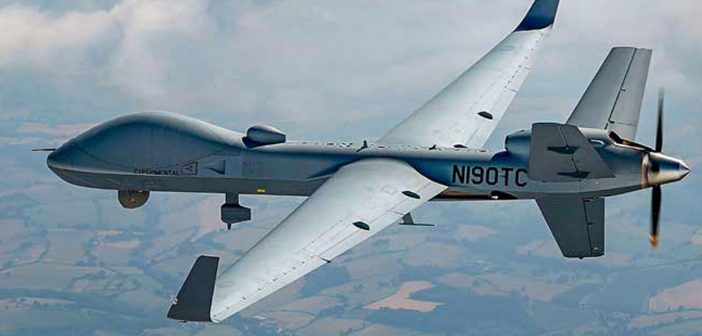India’s acquisition of 31 Predator drones from the U.S. marks a significant enhancement in its defense capabilities. Approved by India’s Cabinet Committee on Security, this $3.1 billion deal includes 16 Sky Guardian and 15 Sea Guardian drones from U.S. defense contractor General Atomics. This strategic purchase comes at a time when India seeks to bolster its intelligence, surveillance, and reconnaissance (ISR) operations, particularly along its volatile borders with China and in the Indian Ocean region(.
Key Capabilities of Predator Drones
The Predator drones—specifically the MQ-9B variant—are known for their impressive endurance and operational versatility. With an endurance of around 35 hours, they can perform a variety of missions, including ISR, target acquisition, and combat support. The Sky Guardian variant is optimized for land operations, while the Sea Guardian is tailored for maritime surveillance, making them crucial assets for both the Indian Army and Navy.
These drones are equipped with advanced sensors, enabling India to monitor vast stretches of territory, particularly its contentious border areas with China and Pakistan. Their ability to operate in all weather conditions enhances India’s surveillance capabilities across its borders and the strategic Indian Ocean, where monitoring hostile naval activity is of paramount importance.
Strategic Implications for Indian Defense
This deal strengthens India’s defense posture in multiple ways. The deployment of these drones at key airbases, such as Gorakhpur and Sarsawa, will significantly enhance joint operations by the Indian Air Force, Army, and Navy. The addition of Predator drones underscores India’s intent to counter China’s growing influence in the Indo-Pacific region and maintain vigilance along the Line of Actual Control (LAC).
The acquisition also complements India’s broader efforts to modernize its military, which includes investments in indigenous projects such as nuclear-powered submarines and fighter jet engines(.
Predator drones will allow India to respond more effectively to potential threats, improving its preparedness for both conventional and asymmetric warfare.
Geopolitical and Economic Considerations
This purchase also reinforces India’s defense relationship with the U.S., expanding a partnership that has grown significantly over the past decade. U.S. defense contracts with India have exceeded $25 billion since 2007, reflecting a deepening military collaboration aimed at balancing China’s military ascendancy in Asia(.
In the larger geopolitical landscape, India’s acquisition of these drones highlights its growing emphasis on self-reliance in defense, while leveraging international partnerships for cutting-edge technology. The Predator deal fits into India’s long-term vision of building a technologically advanced military while maintaining strategic autonomy in a multipolar world.
Conclusion
India’s acquisition of Predator drones represents a crucial step in strengthening its defense infrastructure. These highly capable ISR platforms will enhance India’s surveillance, intelligence gathering, and response capabilities, addressing its security needs across multiple fronts—from land and sea borders to the broader Indo-Pacific region.





